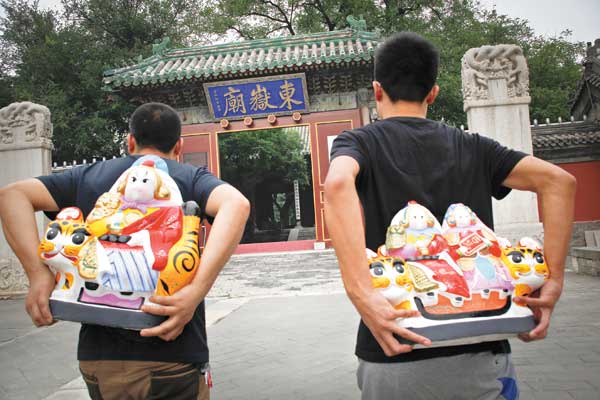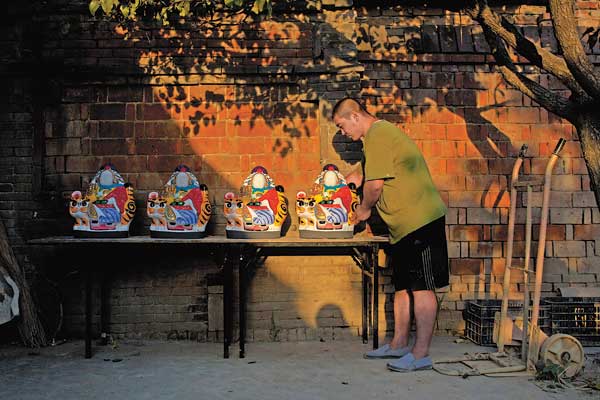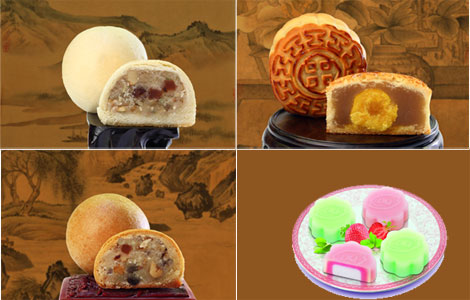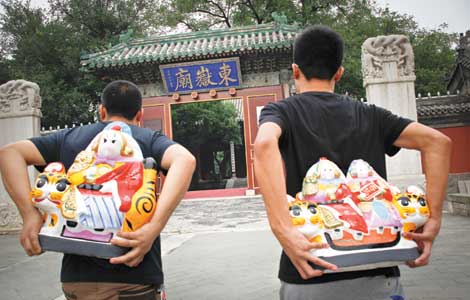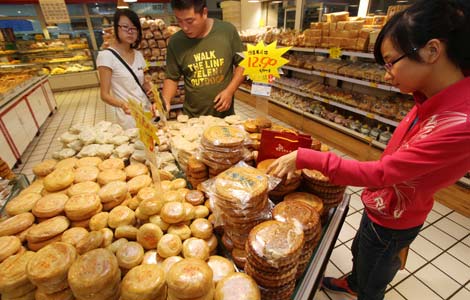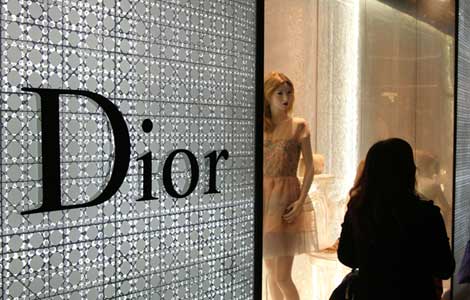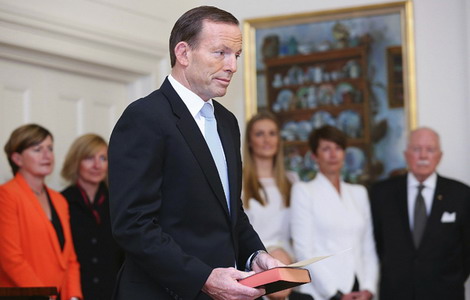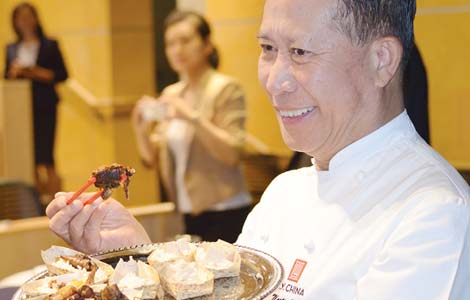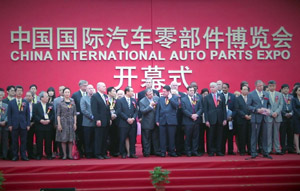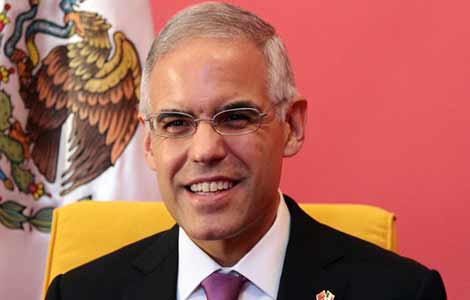Beijing's rabbit god returns
Updated: 2013-09-19 01:17
By Kuang Linhua (China Daily)
|
||||||||
Though it was on the brink of dying out just a few decades ago, the tradition of sculpting icons for Mid-Autumn Festival is coming back, Kuang Linhua reports
In a small courtyard in eastern Beijing's Tongzhou district, Hu Pengfei guides several craftsmen in his workshop as they paint colors onto clay sculptures of the rabbit god, a traditional Beijing folk icon. This is a typical scene at the Lucky Rabbit Workshop every year before Mid-Autumn Festival. With a rabbit's head and a human's body, the rabbit god is local to the Chinese capital. It was a traditional folk custom logo of the festival in old Beijing.
Legend has it that there was an epidemic in the city long ago. The Moon Goddess sent her white rabbit to earth to treat the disease. People began to worship him after that, and the white rabbit is revered as the patron god of Beijing.
Hu Pengfei is the founder and head of the workshop. He said the process of making a clay rabbit figurine involves more than a dozen procedures and takes a whole week.
The craft is very complicated. The craftsmen must have a good sense of control as well as master sophisticated painting skills.
In the old days of Beijing, all the households would put rabbit god sculptures on their altars along with some fruit sacrifices offered to the moon during the Mid-Autumn Festival. After that, the clay sculptures would be given to children as toys, Hu said.
The tradition started to decline in the 1950s, and the craft nearly became extinct in the city.
But, in the 1980s, some of the older craftsmen began to revive the custom.
"Today, the rabbit god has become an art form that carries on a culture and tradition," Hu said.
Hu is from Northwest China's Shaanxi province, and his family has a tradition of making clay figures.
Although only 31 years old, Hu has been making clay rabbit gods as part of the famous temple fair at the Dongyue Temple during the Mid-Autumn Festival for six years.
He tells the story of the rabbit god to tourists and teaches primary and middle school students how to make the sculpture.
"I am not a Beijing native, but I hope my craftsmanship and enthusiasm could allow more people to experience the charm of the rabbit god and ensure that this traditional culture is passed down to future generations," he said.
At present, the Lucky Rabbit Workshop produces more than 10,000 sculptures every year. Most of these handicrafts are sold to gift shops.
In addition to making the statues in the traditional style, the workshop also innovates and develops new sculptures such as rabbit goddesses and rabbit babies, which combine fashion with tradition.
Most Viewed
Editor's Picks

|

|

|

|

|

|
Today's Top News
Starbucks asks customers to leave guns at home
New US private spacecraft launched to ISS
Brazilian president postpones US visit over spying
China asked to help end Syrian conflict
Mother guilty of children's death
Restart Six-Party Talks, says Wang
Rules to improve gov't transparency
Consumers shop for reliable advice
US Weekly

|

|
